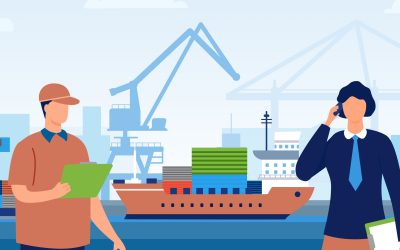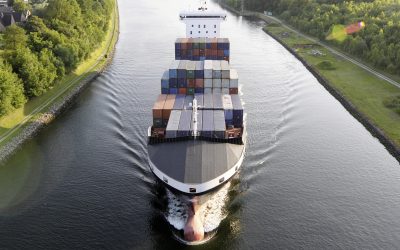

Capt. Runa Jörgens
Head of Issues and Projects/Shipping
Phone: +49 40 9999 698 - 71
E-Mail: Joergens[at]dmz-maritim.de
Introduction – on the need for and motivation to conduct an international field analysis
In 2018, the German goverment responded to the FDP party’s parliamentary question on the “Automation of Ships” by stating that, in its estimation, “highly automated, remote-controlled or fully autonomous ships and systems will gradually find their way into use.” ¹
This statement is supported by trends in research, development and innovation (RD&I) over the last three years. Internationally, the first prototypes of autonomous ships are already in use on the water; these include the MASSTERLY-operated container ship Yara Birkeland on the Trondheim Fjord (Norway) and the IBM-operated research vessel MAS400 in the UK.
In its position paper on autonomous maritime systems (AMS), the German Institute of Navigation (DGON) has demanded that “[…] in various fields of action and topics […] politics be supported in creating suitable framework conditions that ensure the successful development of this important maritime core competence for the future in Germany.”²
With the study “International Field Analysis on Use Cases of Autonomous Maritime Systems,” commissioned in summer 2021, the German Maritime Centre wants to create the basis for strategic coordination regarding international knowledge and technology transfer and to help develop and promote use cases concerning holistic AMS ship designs on a national level.
Aim of the study
The international field analysis aims to capture and document AMS projects as well as to analyse and evaluate their characteristics and framework conditions. The study is tasked with discussing AMS use cases and studying and analysing them with regard to their technical feasibility, their economic potential, and their ecological and societal acceptance. In addition, the study is to develop recommendations for action in order to initiate an international technology transfer as well as to enable and promote national RD&I of certain AMS use cases and to guide them on different decision-making levels.
Results/approach
International project review on knowledge transfer
In the first step of the study, AMS projects worldwide were researched. More than 340 RD&I projects were reviewed and evaluated. 94 of these projects were assessed as potentially relevant, 35 of which were in turn identified as authoritative with regard to the criteria of “holistic ship design” and “goal of full autonomy”. These 35 projects were qualitatively ranked regarding factors such as the technology readiness level, ship size and planned area of operation. The 25 projects with the highest ranking were included in a project catalogue that briefly describes the individual projects, including their goals, and provides info graphics on key factors such as dimensions, propulsion type and funding amount.
In order to determine the current status of AMS in Germany in international comparison, the project catalogue was used as a basis for conducting an extended country and project analysis. For this purpose, the factors favouring RD&I were discussed in a country-based analysis of the political, economic, social, environmental and legal (PESTEL) framework conditions for the leading technological nations of China, Germany, the Netherlands, Norway and the USA. The extended analysis showed that Germany can keep up with the leading technological nations in this field, measured by the number of AMS projects. The indicator-based PESTEL analysis concludes that Germany performs above average in all respects, so that in principle, there are no obstacles to innovation in the development of AMS. Germany’s specialised shipbuilding industry is an international leader, and the existing inland and maritime waterway network offers a large number of potential use cases, so that technological leadership would also be possible in the AMS sector.
Expert survey to assess the probability of realising AMS use cases
The probabilities of realising the respective use cases were examined and assessed in expert surveys. First, superordinate, abstract use cases for AMS were developed, then methodological preparations were undertaken. For this purpose, a DGON information paper was used. Use cases were developed in almost all areas (tasks in the transport of goods and people, exploration tasks, public authority tasks, etc.) as well as for almost all areas of application (maritime, coastal and inland shipping, port areas, urban areas etc.), operational routes and operational durations.
Assessments were made in five different clusters: technology, safety, economy, society and ecology. Within the clusters, evaluation criteria were defined, e.g. technology potential, legal framework, social acceptance, economic viability and contribution to sustainability. Theses and questions pertaining to the criteria were formulated and their probability of materialising was evaluated by experts in a two-stage survey procedure.
For the first survey stage, various “knock-out” criteria were defined, especially in the area of security. If the probability of realising these criteria was assessed as “low”, the use case was excluded from further consideration within the study. The aim of the first survey stage was to reduce the total number of use cases to be evaluated. As a result of the first survey stage, all use cases with a “worldwide area of application” were excluded as “not likely” due to high technical obstacles.
The remaining 14 use cases were presented to selected experts from the fields of technology, security, society, economy and ecology for evaluation in a second, anonymised survey. As a result, the realisation probabilities of the evaluated use cases were very close to each other. However, it emerged that use cases with planned tracks and regional areas of application (e.g. research, surveying or combating water pollution) were rated as more likely to be realised. In contrast, use cases in the transport of goods within regions or on inland waterways were rated as having challenges. Concerning the “cluster economy” criteria, the experts’ attitude was predominantly pessimistic, whereas opinions in the technology area were clearly optimistic.
Recipient-oriented options for action
The results of the expert survey were processed and strengths, weaknesses, opportunities and threats (SWOT) were analysed and evaluated from a German RD&I perspective. Based on the SWOT analysis, options for action were discussed with a view to optimally utilising strengths and opportunities and avoiding weaknesses and risks. To optimally address options for action based on key positions, a stakeholder analysis was carried out. From politics to administration to business and science, all stakeholders in the context of AMS were discussed and assigned a specific role.
- The political sector should, in collaboration with all relevant actors, develop a national strategy as a steering mechanism that ensures market and technological development, corresponding regulations and social acceptance.
- The topic of autonomous shipping and its sustainable development should be placed in a shared context. Alongside industry and business, which need to transform their business models in the coming years, public authorities must also take action by facilitating the approval and use of innovative technologies in a timely and smooth manner.
- In order to strengthen the innovation-friendly climate in Germany, public administrations and industry associations should closely guide and help shape the form of standardisation adopted in the area of AMS internationally in the coming years. This is particularly important to ensure global market access for technology from Germany.
- Based on a comprehensive research agenda, market-oriented autonomous complete systems should be developed and tested in the fields of science, research and development, e.g. in appropriate test fields in real and virtual spaces. In order to keep up with the rapid progress of technological development in the international environment, the agile promotion of related projects is necessary.
- In addition, private and public investments in existing and new infrastructure will be necessary. The focus here is not only on original maritime infrastructures, but also on designing existing multi-modal logistics chains for autonomous transport. Government measures should ensure that investments do not represent obstacles to timely market entry by national companies.
Summary and outlook
Autonomous maritime systems have long since found their way into use internationally. Above all, the leading technological nations of China, Germany, the Netherlands, Norway and the USA are currently acquiring experience with AMS in groundbreaking international pilot projects. What almost all projects have in common is that automation and the unmanned operation of ships go hand in hand with low-maintenance or maintenance-free propulsion systems. This combination offers opportunities for safer, more efficient and climate-neutral ship operation. Risks currently lie in the economic area, as the investment costs are not yet in economic proportion to the effects of personnel savings and increased efficiency. An interesting source of potential will likely relate to inland navigation, where the lack of personnel due to demographic developments could make the use of autonomous systems necessary.
The first industrial and market-ready series products are currently being developed, primarily in the field of exploration and monitoring. One example of this is Ocean Infinity, which offers automated measuring ships more or less “as-a-service” with its “Armada fleet” and thus opens up new business fields for the maritime industry.
On 17 March 2022, the German Maritime Centre presented the current status of international developments on AMS at a public event.
1) Drucksache 19/337912.7.2018 2) DGON_2018_-_Positionspapier_zum_Thema_Autonome_Maritime_Systeme.pdf
























